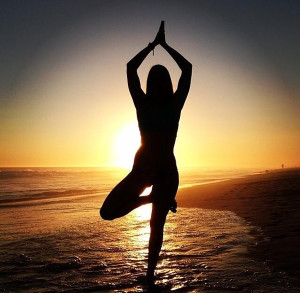One of the most important tools in the weight loss tool box is PORTION CONTROL. Being able to control the amount we eat can allow us to enjoy a greater variety of foods–even the not-so-healthy kind–and still stick to weight loss or weight maintenance goals. Try some of the creative tips from the video below to curb your food portions:
1. Use smaller plates: Our eyes are often hungier than our stomaches. Using smaller plates will make your eyes feel like you’re eating more when you’re cutting down your portions
2. Eat with your non-dominant hand: Putting in the extra brain effort will help you eat 20% less
3. Drink from tall thin glasses: Humans are terrible at judging volume. Using tall thin glasses, instead of short wide ones, will help you consume less volume without even realizing it.
4. Place a mirror in your kitchen: Literally reflecting on what you’re eating will help you become more conscious of what you consume
5. Chew fruit-flavoured gum when feeling hungry: As we discuss in Craving Change, sometimes we just feel ‘mouth hunger’–the desire to fill our mouth without the organic need to fill our stomach. Gum can be a calorie free way to curb this craving
6. Eat slower: It takes your brain 20min to get the signal from your stomach that you’ve eaten. Slow down your eating to give your body time to process the satiety signal and avoid overeating.
7. Use red plate: Research shows red dishes make people eat less, maybe because the colour is associated with ‘STOP’. So if you have a choice, like when buying disposable dishes for your next party, go for red.
8. Turn off your TV: Watching TV at mealtime often leads to mindless eating because you can’t concentrate on both the screen and your food at the same time. Simply turning off the TV and tuning into your meal can help reduce intake.
9. Photograph your unhealthy foods: Just recording food intake has been shown to help people reduce the amount of unhealthy foods they eat. Keeping a photo-journal of your unhealthy food choices can help you become more conscious of them and reduce their intake.
10. Decrease food variety: Increased food variety leads to increased desire to try a little of everything, which can add up to a lot of food on your plate. Serving the same amount of food, but with less variety, can help cut down your eating.
httpv://youtu.be/0Whvs_gSAPw
10 Amazing Way to Stop Eating Too Much
For more help with your weight loss or nutrition goals, visit https://www.formfunctionclinic.com/#locations or call 905.604.9355 to make an appointment with a registered dietitian.
Don’t wait another day, start your journey to good health today!

